The Scientific Development and Clinical Transformation of Radiopharmaceuticals 2024 Suzhou Symposium was held successfully on September 23, 2024. The symposium is jointly organized by Soochow University, the State Key Laboratory of Radiation Medicine and Protection, the First Affiliated Hospital of Soochow University and United Well (China) Co., LTD.
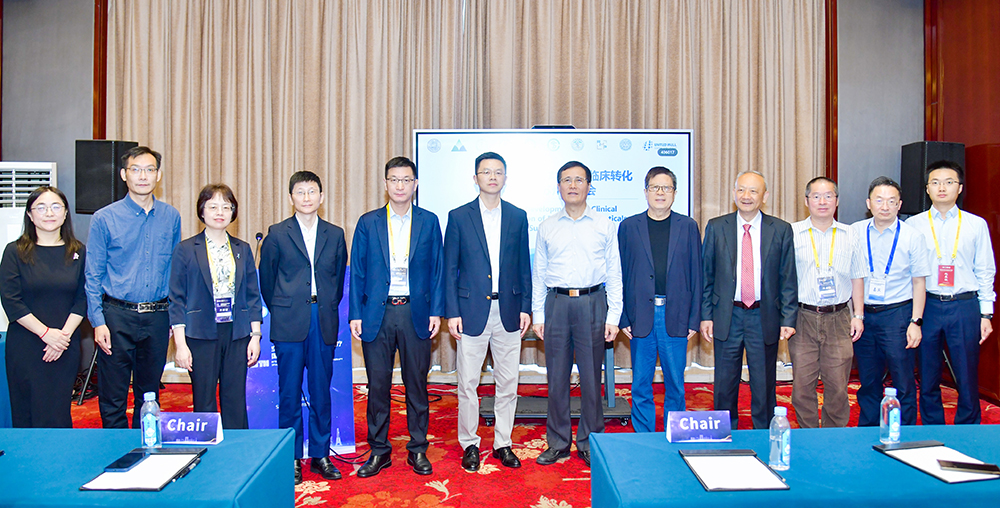
Taking the opportunity of the 9th International Symposium on Space Radiation Research and Particle Radiotherapy, with the concept of "Pragmatic Innovation, Integrated Development, Cooperation and Exchange", the symposium aims to promote the integration of disciplines, establish industry links, explore innovation frontiers, and promote exchanges and cooperation.
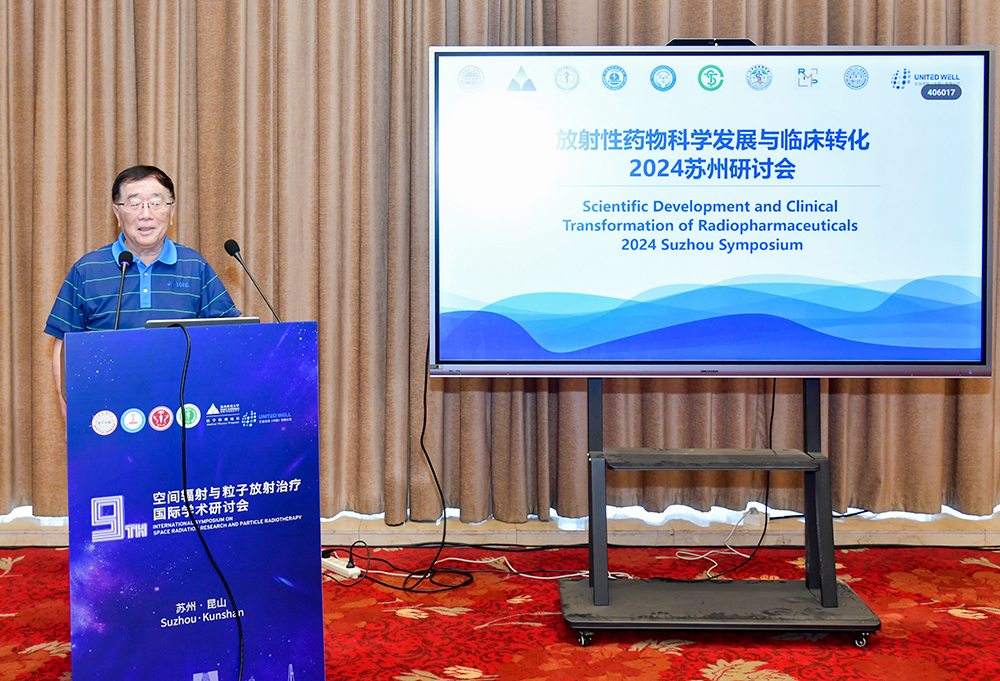
Zhifang Chai, Academician of Chinese Academy of Sciences
Zhifang Chai, academician of Chinese Academy of Sciences, delivered a speech at the opening ceremony of the symposium. Xiaotao Jin, former deputy director of the National Health and Family Planning Commission, Member of the Party Leadership Group, and Heping Xu, director of the General Office of the Ministry of Science and Technology, made an in-depth interpretation of the national strategy and gave guiding suggestions for the development of nuclear medicine.
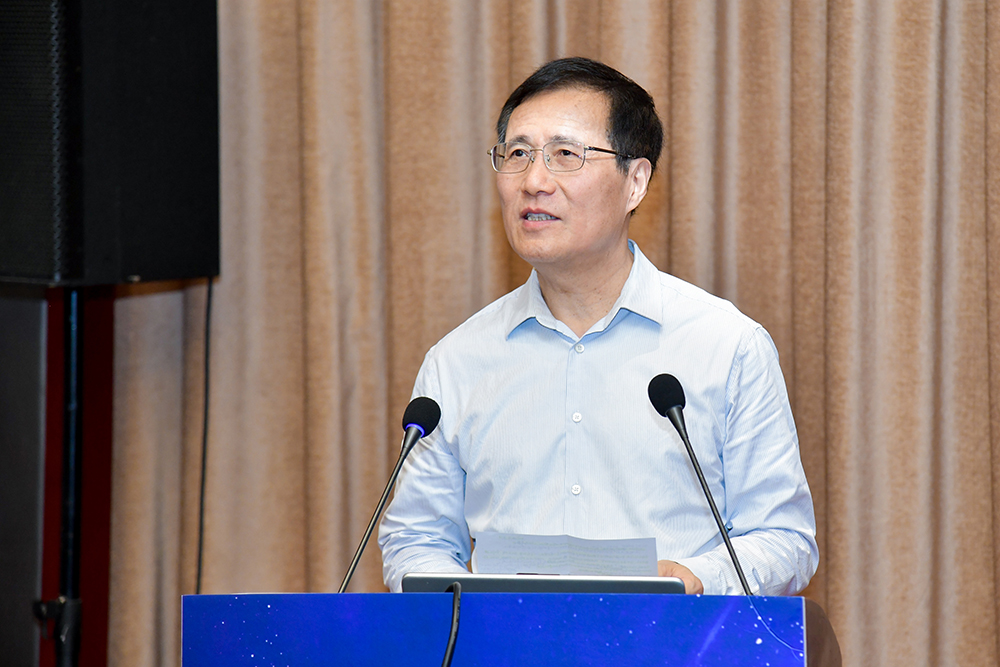
Xiaotao Jin, former deputy director of the National Health and Family Planning Commission, Member of the Party Leadership Group
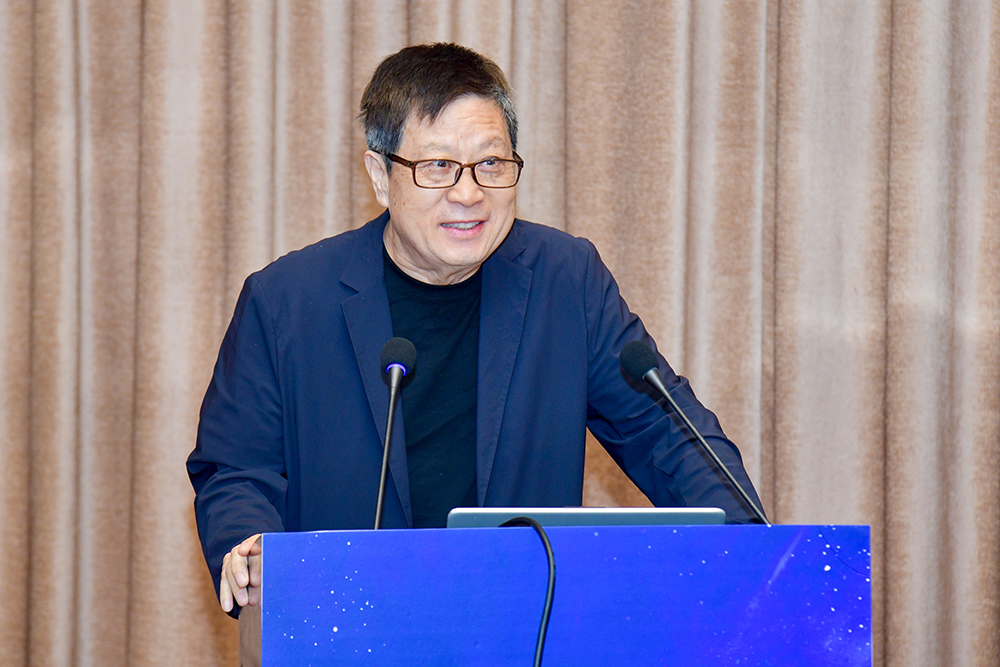
Heping Xu, director of the General Office of the Ministry of Science and Technology
The symposium specially invited the famous experts, scholars and doctors in the field of nuclear medicine and molecular imaging, discussed the key links around radiation and health, nuclear medicine imaging probe, radioactive drug diagnosis and treatment, and innovation clinical. It focused on the three major themes, "innovation", "achievements" , and "clinical application", finally analyzed the nuclear medicine research and development experience, commercial path and ideas.
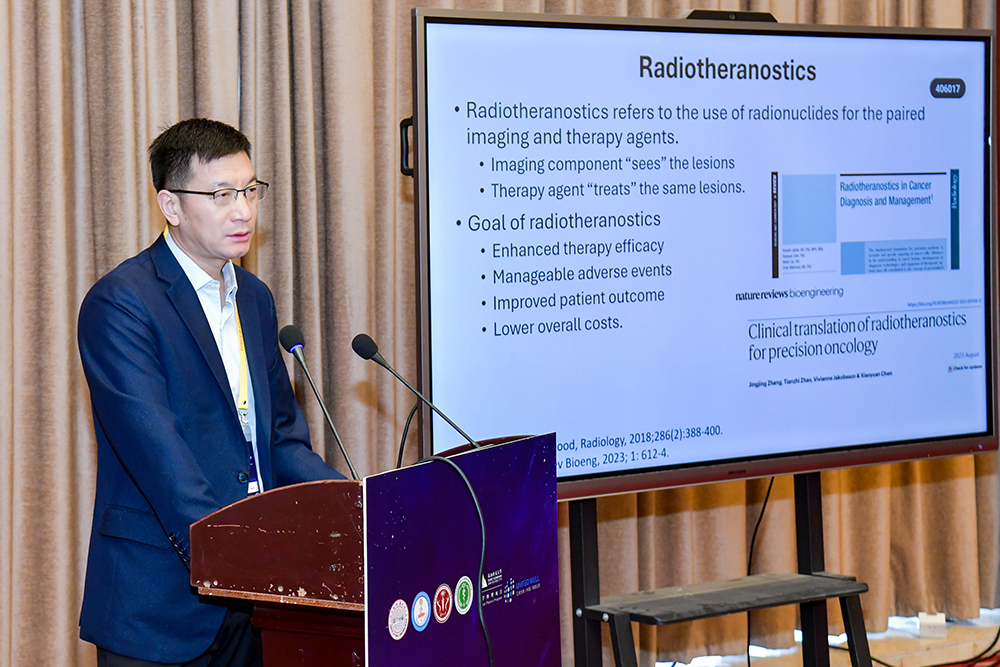
Xiaoyuan Chen (Shawn Chen), academician of the European Academy of Sciences, member of the National Academy of Sciences and tenured professor at the National University of Singapore
Professor Xiaoyuan Chen (Shawn Chen) pointed out that PSMA would still be an important target in the future, and had the potential to develop new radioactive drugs in the direction of cancer diagnosis and treatment. He also highly evaluated the prospects of Ac-225, Pb-212, and Lu-177.
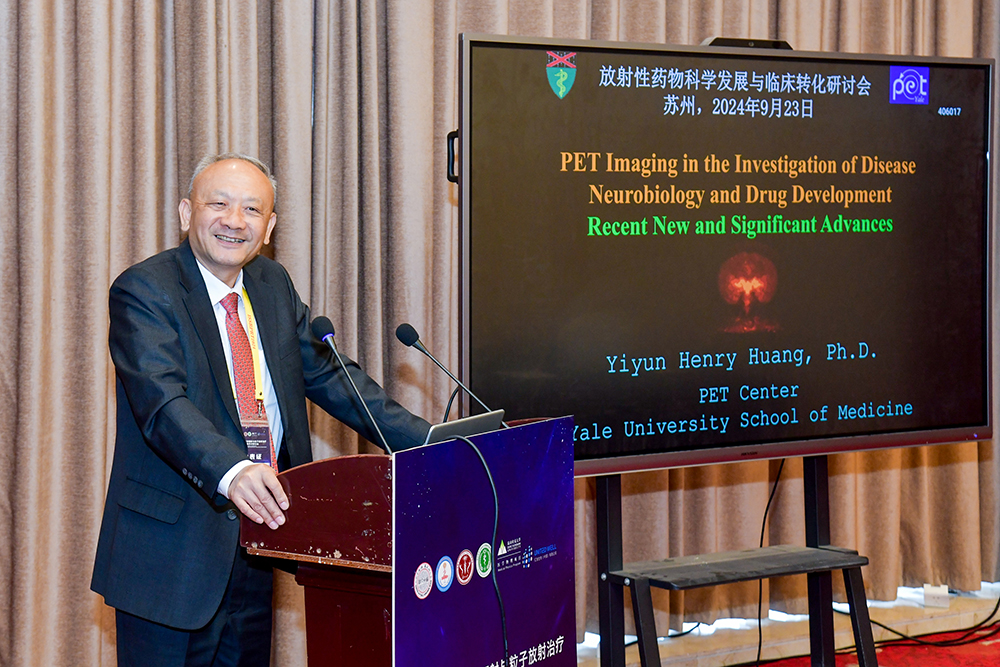
Yiyun Huang (Henry Huang), Co-Director and Director of Chemistry at the Yale PET Center and Professor of Radiology and Medical Imaging at the Yale School of Medicine
Professor Yiyun Huang (Henry Huang) shared his valuable experience in the development of early diagnostic drugs for AD in his report on PET imaging in Neurobiology and Drug Development of diseases. He emphasized the value of PET in the diagnosis, treatment and monitoring of AD patients, especially the new discovery and application of new neurosynaptic molecular probes in the diagnosis and treatment of AD diseases. Professor Huang's team developed a series of C-11 and F-18 labeled PET imaging agents around the pathogenesis and early diagnosis of AD, which can be used to distinguish different AD pathogenesis and guide AD treatment options.
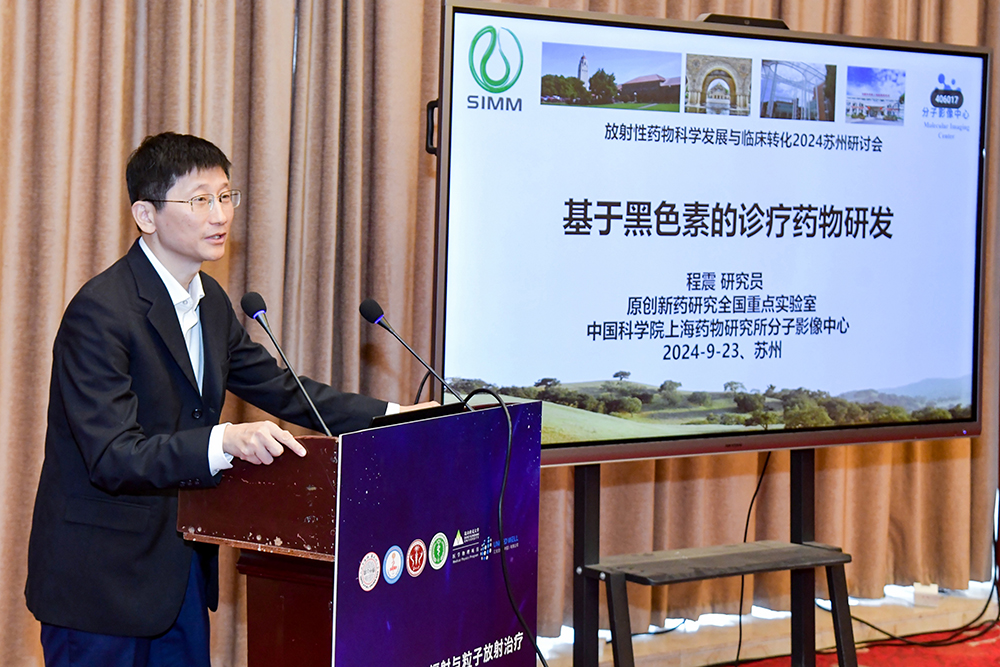
Zhen Cheng, researcher of Changjiang Scholars Program of Ministry of Education and Center of Molecular Imaging Center, Shanghai Institute of Materia Medica, Chinese Academy of Sciences,
Professor Zhen Cheng systematically introduced the melanin-based diagnosis and treatment drugs in his report. The team targeted melanin, synthesized a series of highly targeted F-18 and Tc-99m molecular probes, and further developed Re-188-labeled drugs, which is expected to achieve the integration of melanoma diagnosis and treatment in clinical practice. In addition to do targeted, melanin as a biological material, can be loaded with different drugs, namely with organic polymer melanin nanomaterials load targeted chemotherapy drugs, such as Sorafenib, multimodal imaging probe and targeted drug forefront of research, in improve the combination efficacy of targeted drugs at the same time, reduce systemic drug side effects. Similarly, melanin can also be loaded with radionuclides, such as Cu-64-PEG-MNPs using the radioactivity of nuclides to realize the integration of diagnosis and treatment of diseases.
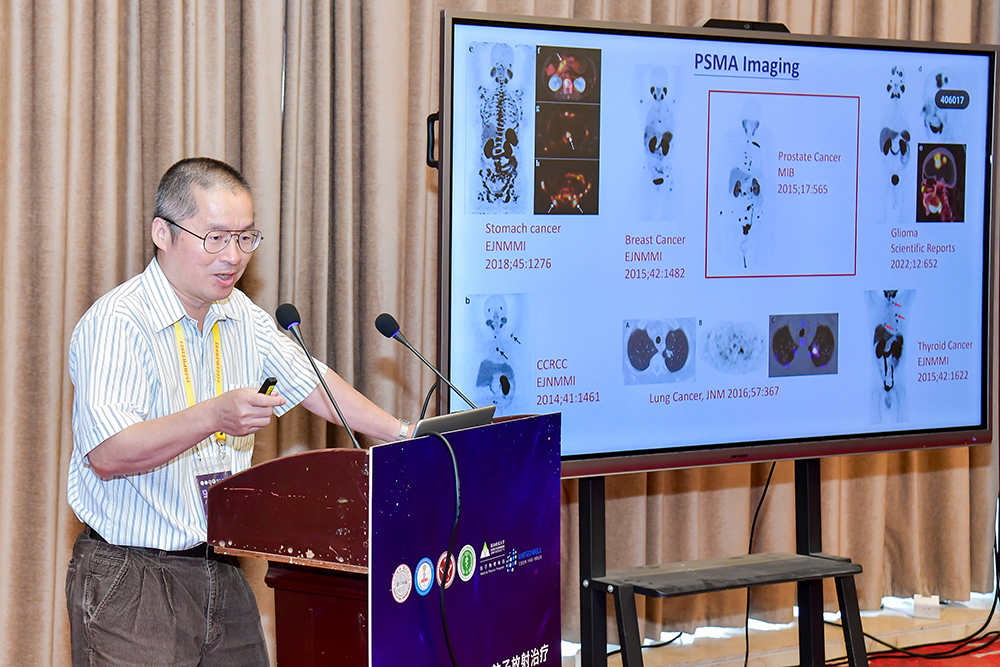
Guoxian Lin (Kou-Shyan Lin), BC Cancer Distinguished Scientist, Department of Radiology at the University of British Columbia
Professor Guoxian Lin presented his experience in the development of PSMA-targeted radiopharmaceuticals for the diagnosis and radiotherapy of prostate cancer at the BC Cancer Center. He also shared his work on reducing the toxicity of 225Ac-PSMA-617 to the salivary glands and kidneys, a problem the team was able to solve by modifying the structure of the target “Glu”.
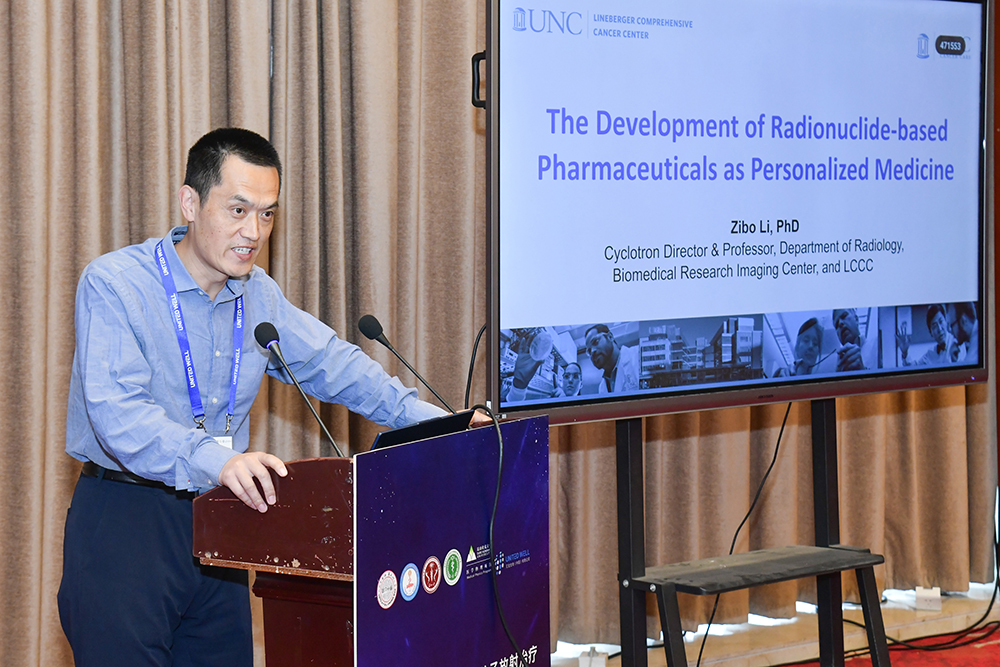
Zibo Li, Director of Cyclotron and Radiochemistry, Professor in Radiation and Biomedical Research Imaging Center at the University of North Carolina at Chapel Hill
Traditional protein labeling usually uses metal elements as radioactive labeling element. Professor Zibo Li brought a new method of F-18 protein labeling. This technique has solved the problem of low efficiency of 18F-labeled protein in the past. Professor Li's team has optimized the protein labeling by chemical methods, so that the complex PK reaction becomes specific and efficient, thus the new route of 18F protein labeling drug was developed. In his report, Professor Li described the process of improving molecular probes, emphasizing new strategies to enhance tumor targeting while minimizing toxicity to normal tissues.
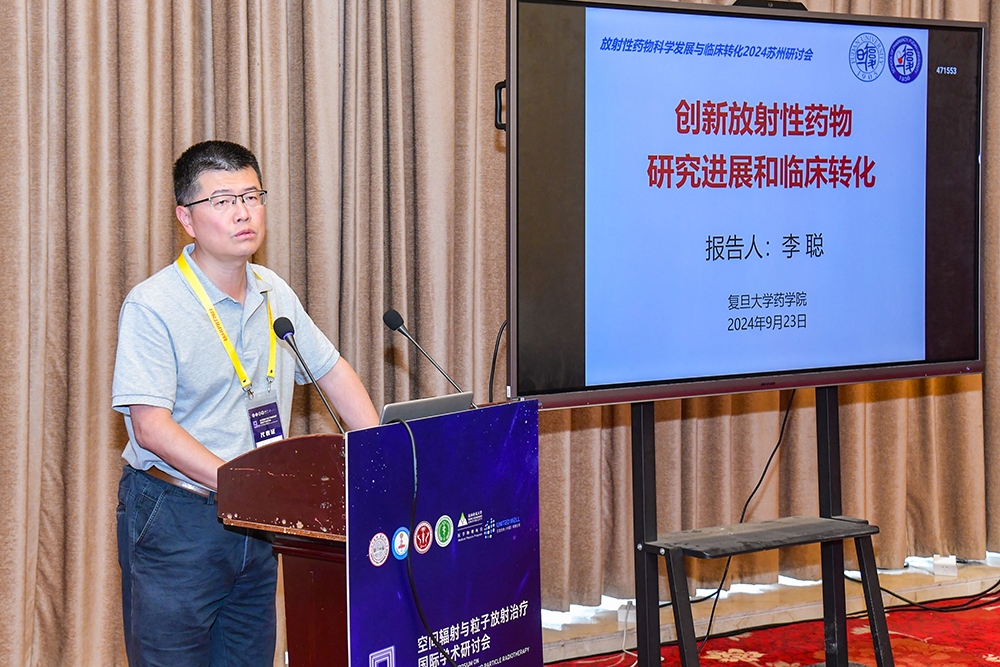
Cong Li, Dean of the School of Pharmacy, Professor in Center for Radiological Pharmacy and Molecular Imaging of Fudan University
Professor Cong Li made a report on the progress of innovative nuclear drug research and clinical transformation, summarizing the current situation of radioactive drugs, the application of radiopharmaceuticals in cancer diagnosis and treatment has received extensive attention. The global market for radiopharmaceuticals will reach US $11.93 billion in 2030, with a compound annual growth rate of 10.8%, the market scale of radiopharmaceuticals in our country is expected to exceed 12.7 billion in 2025. Targeted radionuclide therapy (TRT) has shown unique potential, especially in the context of personalized therapy and precision medicine. But at present, the main problem in the development of radiopharmaceuticals is that the innovation of targets is not enough.
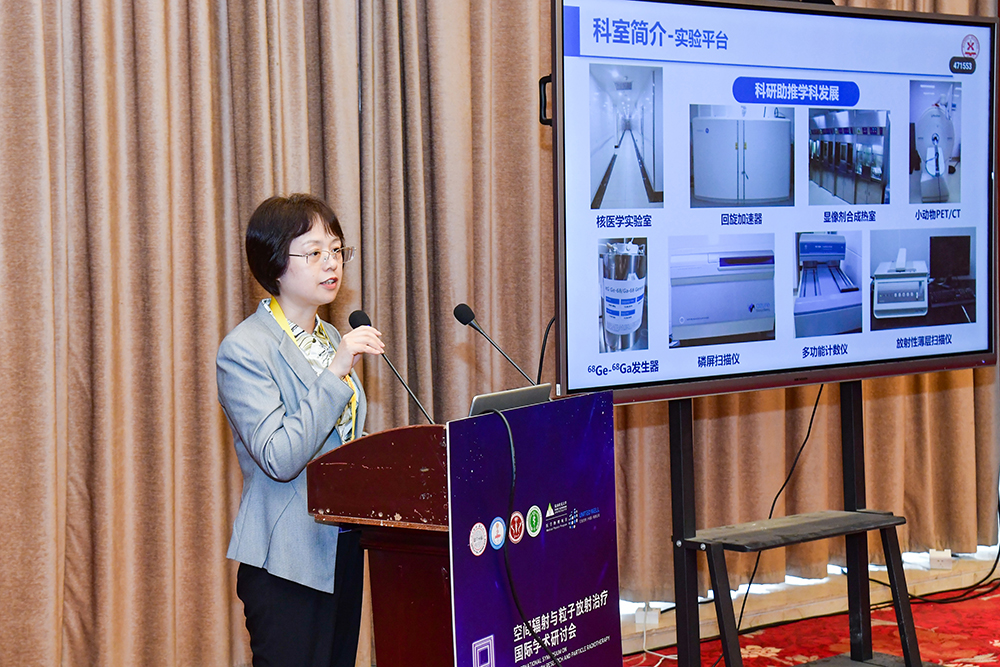
Shuo Hu, Director of the Department of Nuclear Medicine, Xiangya Hospital, Central South University and Director of the Key Laboratory of Nano Biotechnology, National Health Commission
Professor Shuo Hu shared the experience of clinical translational application of new nuclear drugs in Xiangya Hospital. In recent years, the Department of Nuclear Medicine of Xiangya Hospital has introduced SPECT/CT, PET/CT and other equipment by using the new concept of nuclear medicine diagnosis and treatment in clinical practice. Professor Hu's team uses synaptic imaging probes to make accurate diagnosis and correct treatment guidance for a variety of neurological disorder diseases, including drug-refractory epilepsy, Alzheimer's disease, stroke, game addiction and obsessive-compulsive disorder. At the same time, the team also studied the pathogenesis of the above-mentioned neurological diseases.
In addition to neuropsychiatric diseases, Professor Hu also demonstrated that PET imaging combined with multi-nuclear drugs can provide imaging evidence for the accurate diagnosis of neuroendocrine tumors, prostate cancer and other diseases, specifically in the area of accurate diagnosis of prostate cancer, the team increased the prostate cancer positivity rate from 36% to 66% using PET/CT-guided targeted biopsy technology.
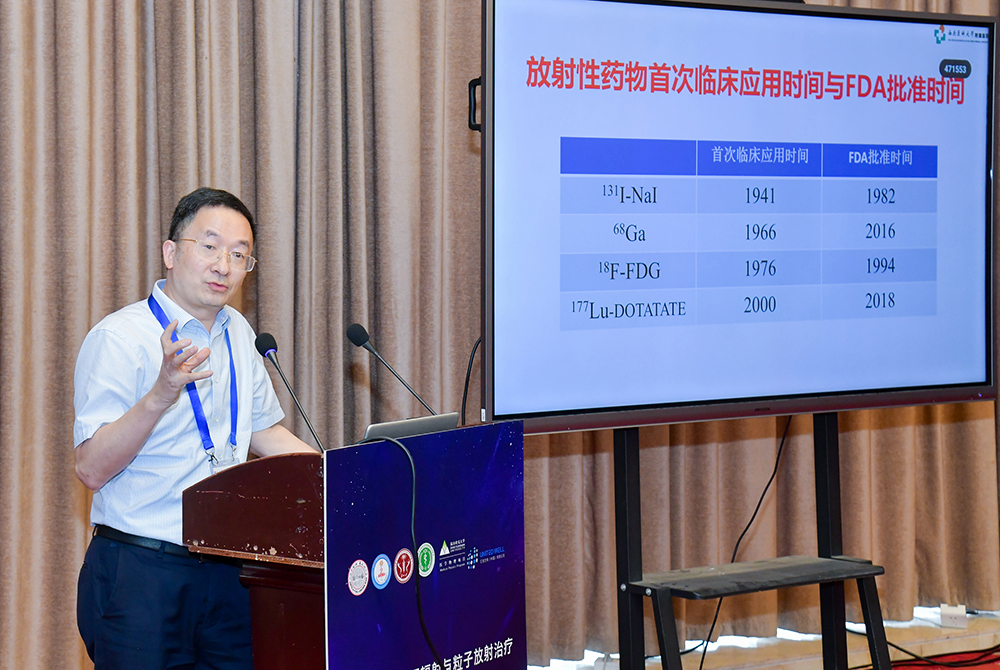
Yue Chen, Director of Nuclear Medicine Department, Affiliated Hospital of Southwest Medical University, Director of Sichuan Provincial Key Laboratory of Nuclear Medicine and Molecular Imaging
Professor Yue Chen introduced the development of 177Lu-DOTATATE, 177Lu-PSMA, 177Lu-FAP/177Lu-TBM and 225AC radiopharmaceuticals in lung cancer, prostate cancer, pancreatic cancer, breast cancer, liver cancer, esophageal cancer and bladder cancer. The clinical application of meningeal cancer has greatly encouraged the confidence of all circles in the treatment of terminal and critical cancers with radiopharmaceuticals, allowing patients to see the hope of cure. It is also a great encouragement for researchers in the field of radiopharmaceuticals.
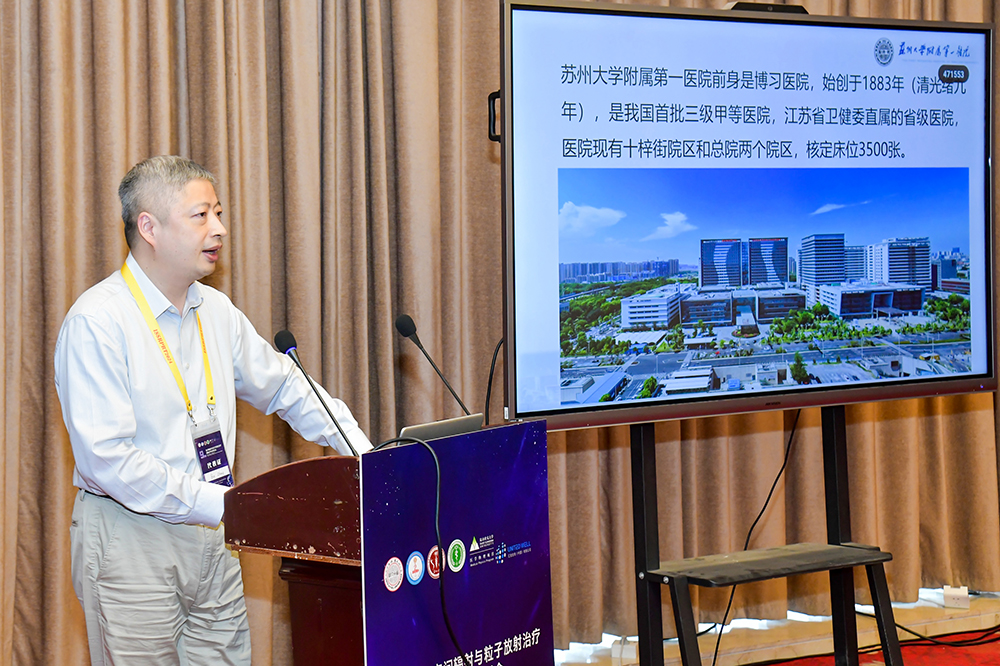
Bin Zhang, Director of nuclear Medicine Department, the First Affiliated Hospital of Soochow University
Dr. Bin Zhang introduced the construction of the Department of Nuclear Medicine, the application of new technology in clinical transformation, and the research progress of target antibody-coupled drugs such as TYOP2 and HER2. Dr. Bin Zhang also made a series of plans for the future of the department.
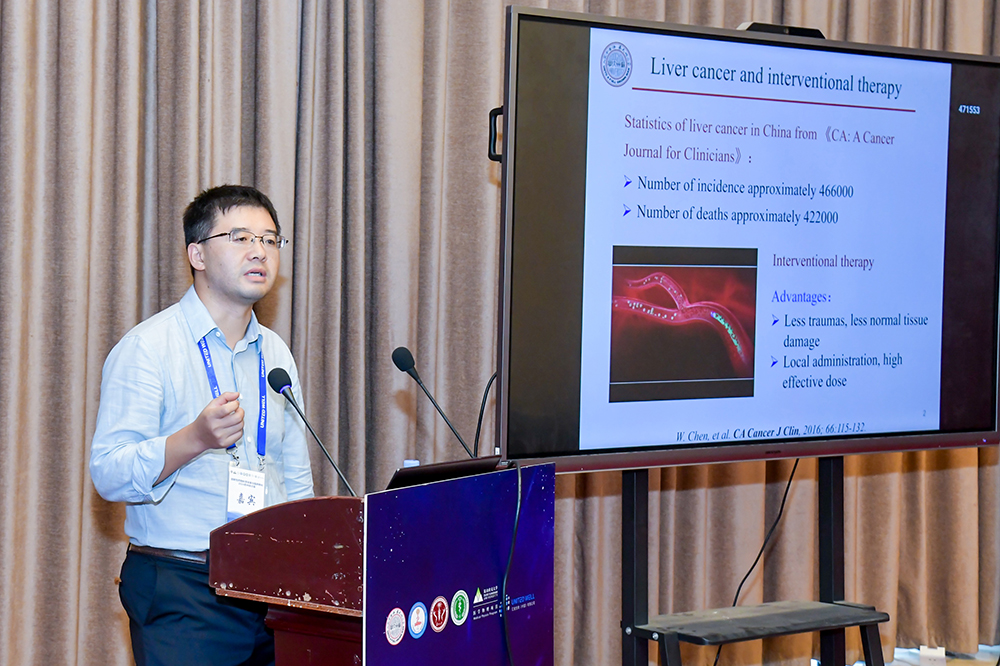
Guanglin Wang, Associate Professor of School of Radiomedicine and Radiation Protection, Soochow University Medical Science Center
Professor Guanglin Wang introduced his team's research in the direction of multi-functional radioactive microspheres for liver cancer embolization.
This symposium focuses on the central theme of wisdom and consensus to play the ability of integration and innovation. It will write a new chapter of the scientific development of radiopharmaceuticals and clinical transformation of wisdom and strength!